
We’ve tested and reviewed well over 500 laptops over the years, searching for the best of the best. But to earn the crown for “best laptop” in 2022, it needs to have it all: gorgeous design, killer performance, a productive keyboard, long-lasting battery life, and much more.
Each of the laptops below has been vetted thoroughly, whether it’s an affordable Chromebook or a decked-out gaming laptop. Our pick for the best overall laptop, the Dell XPS 13, is the option we recommend to most people, but something from the list below should suit your needs.
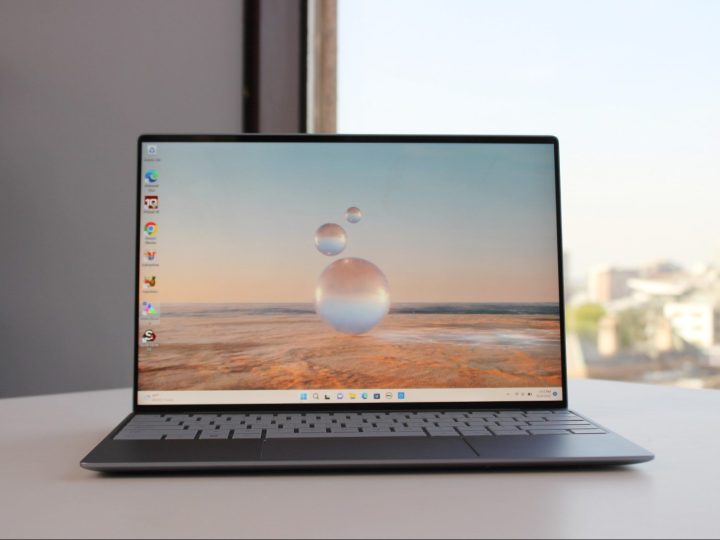
Dell XPS 13 (9315)
The best laptop under $1,000
Pros
- Aggressive price
- Very compact design
- Great battery life
- Comfortable keyboard
- Display is bright and high quality
Cons
- No headphone jack
- Performance is lacking
Why you should buy this: It’s the most affordable XPS 13 in recent memory.
Who it’s for: Anyone who wants a compact, premium laptop.
Why we picked the Dell XPS 13 (9315):
There are two things you need to know about the Dell XPS 13 before buying one. First, it doesn’t have a headphone jack. Second, its performance is a bit lackluster compared to many of the latest 12th-generation Intel-powered laptops.
With those downsides in mind, that might make you wonder why a laptop like this is still showing up on this list at all. Well, it really all comes down value. If you can set those two negatives aside, you’ll find a gorgeous little laptop priced like none other. The base configuration tends to fluctuate in price, but it ranges between $749 and $999, making it the cheapest the XPS laptops have ever sold for. Keep in mind, you’re getting 512GB of storage in that model, too. That makes a lot of laptops on this list seem overpriced, especially considering how good the battery life and display are. That’s even true sitting next to the M1 MacBook Air. It’s a fantastic value — so long as you can accept the lack of a headphone jack.
Of course, you’ll also find a laptop here with premium features, such as a comfortable keyboard, a great touchpad, and a killer IPS screen. And, of course, the design is stellar. The compact little 13-inch laptop continues to have remarkably thin bezels, and the new color options are both unique and tasteful. It’s very hard to find a laptop under $1,000 that hits all those marks, especially without sacrificing anything major.
You might wonder why we’ve included the XPS 13 on the list rather than the XPS 13 Plus. After all, the Plus model is more powerful and has some really excellent features, such as the seamless haptic feedback trackpad and the larger, edge-to-edge keyboard. Those features are all neat and certainly make it a futuristic-feeling laptop, but we’re not sure they’re worth the extra cost over the standard XPS 13, which comes in hundreds of dollars cheaper.

Dell XPS 13 (9315)
The best laptop under $1,000
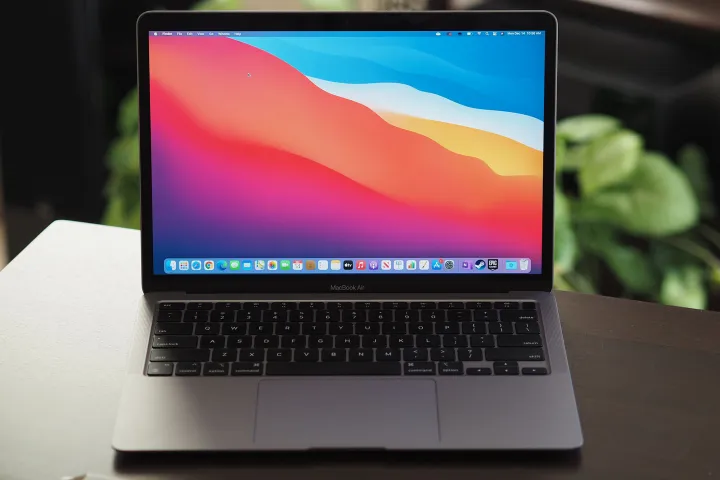
Mark Coppock/Digital Trends
Apple MacBook Air M1
Still the best MacBook
Pros
- Apple’s M1 blows Intel away
- Phenomenal battery life
- Excellent keyboard and touchpad
- Rock-solid build quality
- Simple good looks
Cons
- Supports only one external display
Why you should buy this: It’s the best laptop for college students and the best affordable MacBook for 2022.
Who it’s for: College students and Mac fans.
Why we picked the MacBook Air M1:
The M1 MacBook Air is a nearly 2-year-old laptop, yet it remains at the top of our list for the incredible value provided by this little MacBook.
The M2 MacBook Air is a flashier design. No doubt about it. It’s a bit more powerful, too. But the M1 MacBook Air remains a mind-boggling good value for the amount of laptop on offer — that includes great performance, battery life, and much more. We won’t begrudge for buying the admittedly solid M2 MacBook Air over the M1; just know that the M1 model is still the better deal.
Chalk it up to the game-changing nature of the M1 chip, which transformed this otherwise plain MacBook into one of the most important laptops of the past decade. Before the M1 MacBook Air, laptops in this line were painfully underpowered. They just weren’t capable enough to get real work done for most people. But with the M1, the MacBook Air is not only impressively powerful again, but it also stays completely fanless and gets insane amounts of battery life. Two years later, and there are still no Windows laptops that can compete in that regard. That’s how important the power efficiency of ARM-based chips is.
The only real downside to the M1 MacBook Air is its external monitor support. Despite coming with two USB-C ports and a MagSafe 3 charging port, the M1 MacBook Air can only connect to a single external monitor. For many people, that will rule out this laptop device entirely. But if you’re a college student or just prefer to do a lot of your work on the go, the M1 MacBook Air is a shocking amount of laptop for the money. If you can catch it when it’s on sale (which it often is), that’s even better.
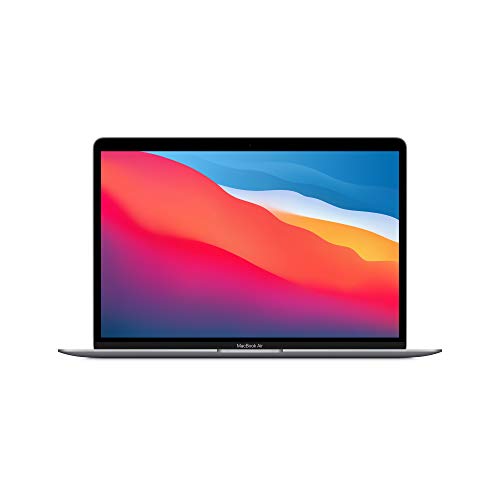
Apple MacBook Air M1
Still the best MacBook
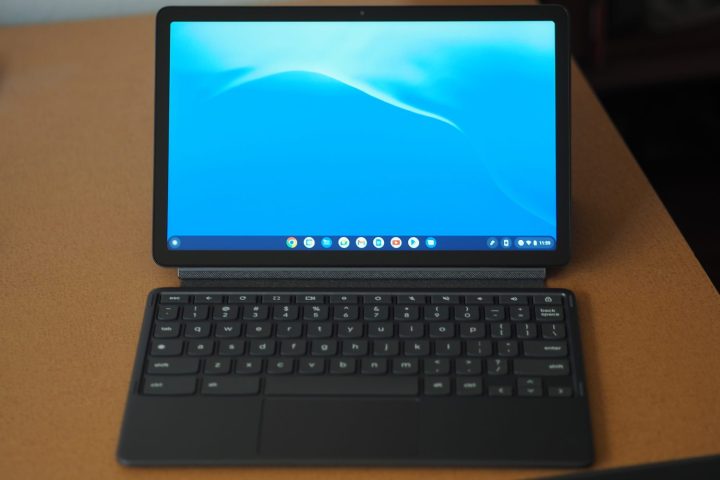
Mark Coppock/Digital Trends
Lenovo Chromebook Duet 3
$300 well-spent
Pros
- Good enough productivity performance
- Excellent battery life
- Surprisingly good display
- Folio kickstand and keyboard included
- Strong value
Cons
- Keyboard is too cramped
- Limited to Wi-Fi 5
Why you should buy this: It’s the best laptop you can buy under $500.
Who it’s for: Students or anyone who needs a small device.
Why we picked the Lenovo Chromebook Duet 3:
Laptops that cost $300 shouldn’t be this good. Seriously. Most laptops you can buy at that price have serious deficiencies, like pitiful performance or awful 720p screens. That’s often true, even on Chromebooks.
But the Lenovo Chromebook Duet 3 manages to deliver a great laptop experience, albeit on a very small device. But this little 10.9-inch is perfect for students or anyone who just needs a compact device to take on the go. The screen resolution is even better than 1080p, reaching up to 2000 x 1200. That’s very sharp for a screen of this size, making it excellent for writing and reading text. It even gets up to 400 nits of brightness, meaning working near windows isn’t an issue. Again, this is unheard of for a laptop of this price.
Surprisingly, the Lenovo Chromebook Duel 3 also comes with a 5-megapixel camera for solid videoconferencing. It has just about everything it needs to compete with the iPad (especially with the recent price jump). The iPad is undoubtedly a better tablet. It’s lighter and has a wide range of gestures and apps to support touch-only controls. The Lenovo Chromebook Duet 3 will disappoint you in that regard, even with support for Android apps. But that’s nothing new for ChromeOS tablets.
The Lenovo Chromebook Duet 3 excels, though, as a work or school device. As good as iPads have become at doing work, if you’re needing to do actual work or school work, having a normal desktop browser and a full keyboard goes a long way toward being more efficient. The magnetic back cover also gives the tablet a kickstand for lots of angles, and you can even bundle in the Lenovo Digital Pen for stylus use.

Lenovo Chromebook Duet 3
$300 well-spent

MacBook Pro 16-inch
The best laptop for photo and video editing
Pros
- Incredible XDR display
- Fantastic creative performance
- Extensive port selection
- Keyboard and trackpad are perfect
- Excellent speakers and webcam
- Endless battery life
Why you should buy this: It’s the best laptop for photo editing or video editing you can buy.
Who it’s for: Creative professionals who need a seriously powerful laptop.
Why we picked the MacBook Pro 16-inch:
The MacBook Pro 16-inch has fixed a lot of the problems with the “Pro” line in the past few years. The Touch Bar is gone. The extensive port selection is back. It’s even thicker and better-cooled now.
But it’s more than just an apology tour. The 120Hz mini-LED screen is the best laptop screen we’ve ever seen, especially when viewing HDR content. The M1 Pro and M1 Max, meanwhile, add discrete-level graphics to the incredible efficiency of the M1. Heck, we even tested out HDR gaming on this screen in Resident Evil Village — and it’s astounding. We’re not saying this is a proper gaming laptop, but the hardware is certainly there to support it.
And then there’s the battery life. It’s one thing for a smaller laptop like the MacBook Air to get world-class battery life, but we didn’t expect that with the larger and more powerful 16-inch MacBook Pro. To our surprise, this thing lasts for just as long. Many Windows laptops with discrete graphics, such as the Dell XPS 15 or the Razer Blade 15, only get four or five hours of battery life. The 16-inch MacBook Pro can last over 18 hours in those same tests. Let that sink in.
On top of that, there are a number of quality-of-life enhancements to the MacBook Pro this time around, such as the improved 1080p webcam and even bassier speakers, both of which are best-in-class.
The price and performance mean it’s not for everyone, though. The average person doesn’t need more than the MacBook Air. But if you need a powerful laptop for content creation, the MacBook Pro is the best “pro” laptop you can buy. The 14-inch model is equally good, but stay clear of the M2 MacBook Pro 13-inch, which uses an outdated chassis and won’t bring the pro-level performance you’re looking for.

MacBook Pro 16-inch
The best laptop for photo and video editing
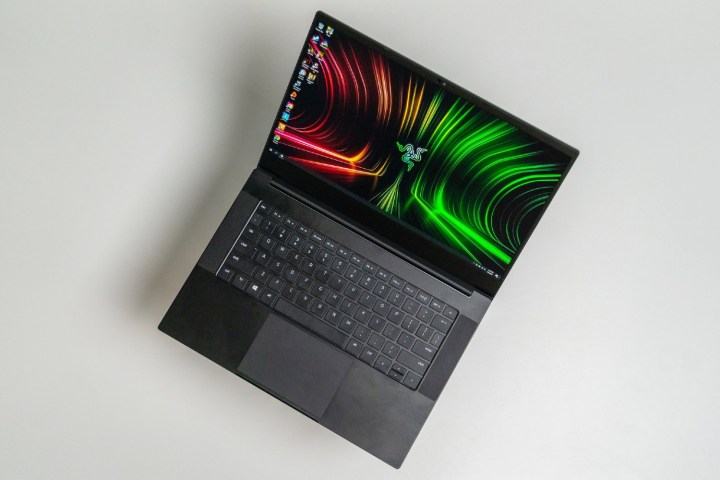
Razer Blade 14
The best gaming laptop
Pros
- Gaming performance is excellent
- Colorful, 1440p display
- Surprisingly small
- Cheaper than Razer Blade 15
- Great battery life
Cons
- Warm surface temperatures
- Thick bezels
Why you should buy this: It’s the best gaming laptop you can buy in 2022.
Who it’s for: People who want a fantastic laptop that can also game.
Why we picked the Razer Blade 14:
Gaming laptops are their own class of laptop that demand their own list, but we wanted to include some here that could easily double as your standard laptop — of course, with the added benefit that these can do some serious gaming after work.
The Razer Blade 14 might be the best example of such a premise. In many ways, it doesn’t feel like it shouldn’t be possible. Up to an RTX 3080 in a thin, 14-inch laptop? Yep, that’s right. And it does it with some pretty impressive performance, too. It comes with a 1440p screen with a 165Hz refresh rate, ensuring that you’re never bottlenecked by the display. Then again, the 1080p model comes with an RTX 3060 and manages to land under $2,000, which is a rare feat for a Razer laptop. This also just happens to be the only AMD Ryzen-powered Razer Blade 14, which is why this gets the best battery life of any gaming laptop we’ve tested.
Yes, this bad boy’s expensive. But what you’re paying for is the ability to switch between work and play without batting an eye. The Razer logo on the lid and the per-key RGB backlighting might catch some attention at the office, but hey, this is a gaming laptop through and through.
There will always be room for larger gaming laptops like the Razer Blade 15 or Lenovo Legion 5 Pro, but the Razer Blade 14 still feels like a miracle. It’s the first AMD-powered Razer laptop, featuring the powerful Ryzen 9 5900HX. It also sports a 1440p 240Hz screen, ensuring that you’re never bottlenecked by the display. Amazingly, the Razer Blade 14 does all this at a few hundred dollars cheaper than the Razer Blade 15.
But no, it’s not the cheapest gaming laptop. Nor is it the most powerful. It is, however, the best overall gaming laptop you can buy, especially if you want something small and portable.
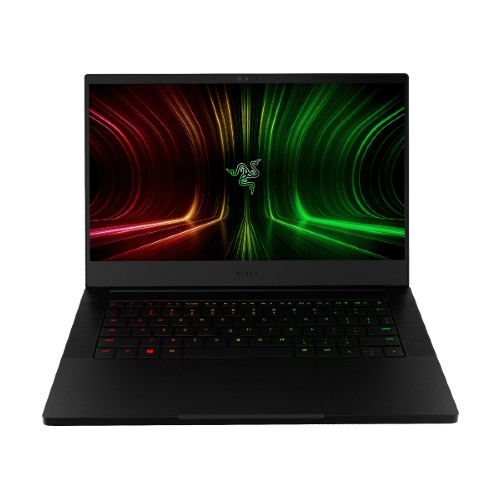
Razer Blade 14
The best gaming laptop
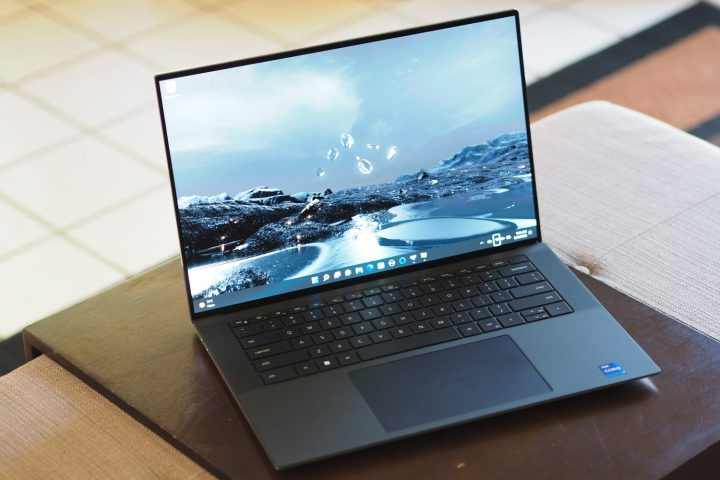
Mark Coppock/Digital Trends
Dell XPS 15 (9520)
The best Windows alternative to the MacBook Pro
Pros
- Streamlined and solid build
- Aesthetically perfect
- Strong productivity and creative performance
- Above-average battery life
- Excellent keyboard and touchpad
- Superior OLED display
- Outstanding audio
Cons
- Expensive
- Performance ceiling limited by thin chassis
Why you should buy this: It’s a great Windows alternative to the MacBook Pro 16-inch.
Who it’s for: Content creators, first and foremost.
Why we picked the Dell XPS 15:
Truthfully, it’s hard for a laptop like the Dell XPS 15 to compete with the MacBook Pro 16-inch. Performance is similar, but the MacBook Pro wins in almost every other category, from the port selection to the screen, even with more minor features like the speakers or webcam. And that’s not to mention battery life, where the MacBook Pro is in another league.
But Macs aren’t for everyone. Many applications or organizations require Windows — and hey, many of us just straight-up prefer it. Content creators need a solid option that is as premium as the MacBook Pro while still providing excellent performance. And that’s where the Dell XPS 15 comes into play.
This is a gorgeous laptop, still using the carbon-fiber weave texture across the keyboard deck and palm rests. That may change in the coming years to align with the XPS 13 and XPS 13 Plus, but for now, we love the look and design. And despite having a 15-inch screen, the overall size of the XPS 15 is far smaller than the bulky 15-inch laptops of yesteryear. That’s thanks to the tiny bezels, of course.
It even comes with four powerful Thunderbolt ports and a full-size SD card slot for convenient transfers directly from your camera. But the performance is what really counts for video-editing laptops. Between the 12th-generation Core i9 processor and a Nvidia RTX 3050 Ti, the Dell XPS 15 is one of the most powerful consumer-class content-creation laptops we’ve ever tested.
If you don’t need all that extra performance, Dell even offers cheaper versions of the XPS 15 that don’t come with discrete graphics, though you may want to consider thinner and cheaper devices that aren’t meant for heavy loads, such as the LG Gram 16, Surface Laptop 5 15, or even Dell’s own Inspiron 16.

Dell XPS 15 (9520)
The best Windows alternative to the MacBook Pro
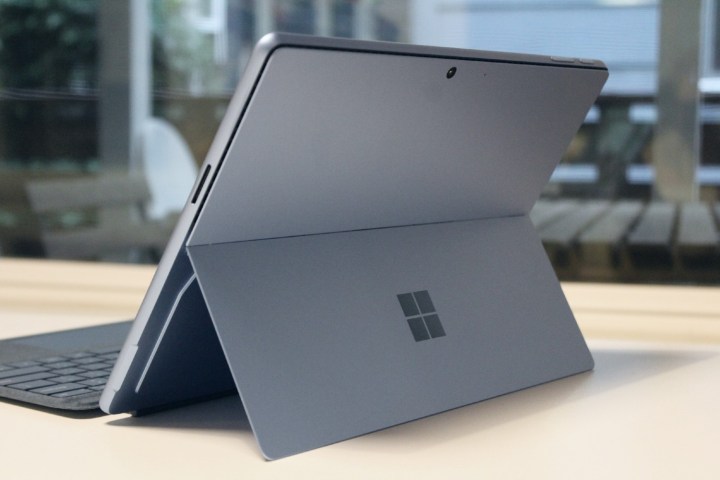
Microsoft Surface Pro 9
The best 2-in-1 laptop
Pros
- New colors look great
- Design and build quality are top notch
- SQ3 is a solid alternative
- Type Cover keyboard is excellent
- High resolution webcam
Cons
- No headphone jack
- Upgrades still too expensive
- Limited performance improvements
Why you should buy this: It’s the best 2-in-1 laptop you can buy.
Who it’s for: Anyone who needs versatility on top of performance.
Why we picked the Surface Pro 9:
For many years, the Surface Pro was all on its own. Other manufacturers had given up on the 2-in-1 form factor, and Windows wasn’t doing much to improve touch interfaces. But that changed this year when multiple new Surface Pro-like devices were released, no doubt thanks to the momentum Microsoft is building with Windows 11.
That means the Surface Pro 9, the latest model in the line, has some serious competition. But even with challengers like the Dell XPS 13 2-in-1 available, the Surface Pro 9 remains on top. Microsoft has been perfecting this hardware for years now, and it shows. The buttery smooth 120Hz display is a highlight, especially with the thin bezels introduced in last year’s model. Microsoft has a more polished product, and even though it asks for more money, the product experience is totally worth it.
Interestingly, though, the Surface Pro 9 is also the first to offer both an Intel model and an ARM configuration. The ARM model uses the Microsoft SQ3, the company’s latest collaboration with Qualcomm, and you might be wondering if it’s finally become a better option than the more conventional Intel model. It certainly gets more battery life, and the addition of 5G connectivity is a bonus. But if performance is what you’re looking for, the Intel model is still the way to go, especially since these latest 12th-gen chips bring quite a performance jump over last year’s generation.
As it stands, that’s the way most people should go, though we wouldn’t blame you for wanting to try something new with the SQ3 model. It seems like many companies want ARM to be the future of Windows PCs, and portable 2-in-1 devices seem like a category ripe for more efficient chips.
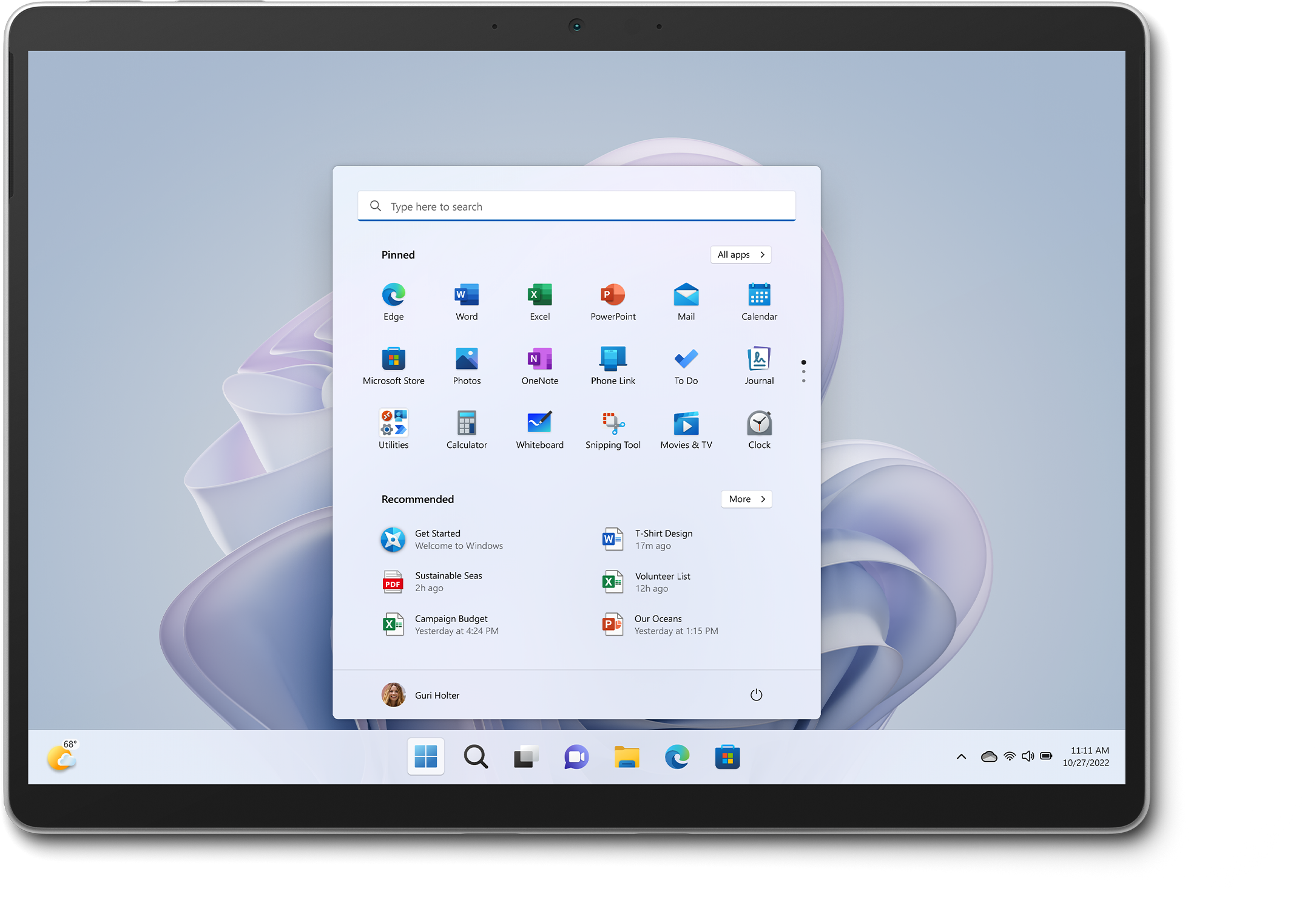
Microsoft Surface Pro 9
The best 2-in-1 laptop
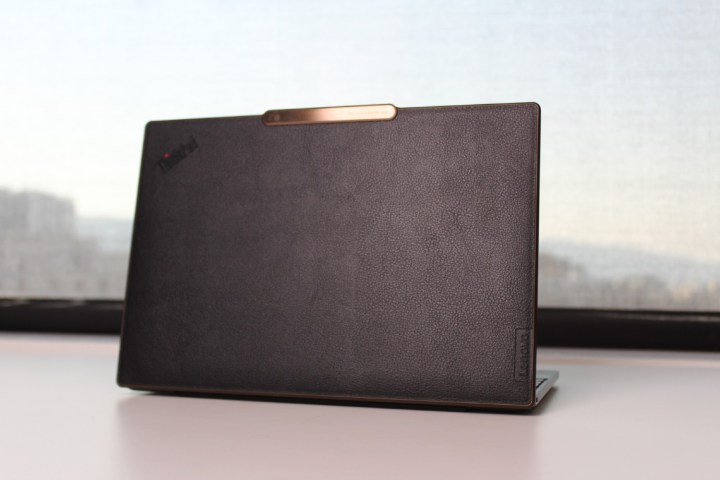
Lenovo ThinkPad Z13
An incredible business laptop
Pros
- Excellent battery life
- Performance is impressive
- Small footprint
- Webcam is solid
- Unique design
Why you should buy this: It’s the best premium business laptop you can buy.
Who’s it for: Students and those with basic computing needs.
Why we picked the Lenovo ThinkPad Z13:
Business laptops don’t have to be boring, and the ThinkPad Z13 proves it. Its faux-leather lid looks unique while still feeling classy, with just enough touches across the chassis to feel modern. Not that you need to work for a big company to love what the ThinkPad Z13 has to offer. The ThinkPad Z13 is the kind of business laptop that the average person would likely be delighted to use — so long as you appreciate the ThinkPad brand and buttoned-up aesthetic.
Of course, the ThinkPad Z13 is more than just an interesting-looking new laptop. It’s one of the best laptops to run on AMD’s new Ryzen 6000 chips, which provide excellent performance and long-lasting battery life. Yes, the security features come baked-in too, but it’s the battery life that really sold us on these chips. With MacBooks leading the charge in battery life, it’s great to see a Windows option that lasts almost as long that doesn’t have an Apple logo plastered to the lid.
The ThinkPad Z13 also includes a 1080p webcam that produces some solid results for videoconferencing. That’s as important as ever, and Lenovo’s design even highlights the feature with its brushed metal Communication Bar. It’s a significant jump up in clarity and sharpness over older laptops with 720p and follows the trend of improving image quality for remote work. There’s even an OLED model if you really want to take the screen to the next level, though we found the cheaper IPS display to be solid on its own.
All of it comes together in a package that feels both unique and appropriate for the office, which is especially hard to pull off at this price. Unlike many high-end business laptops and ThinkPads in general, the ThinkPad Z13 isn’t extravagantly overpriced, which makes the excellent performance, battery life, and features even more noteworthy.

Lenovo ThinkPad Z13
An incredible business laptop

Asus ROG Zephyrus G14
AMD drops the mic
Pros
- Excellent gaming machine
- Thin, small, and light
- Game-changing CPU performance
- Responsive touchpad
- Unique lid design
Cons
- Noisy at idle
- Mushy keyboard
- No webcam
Why you should buy this: It’s a compact gaming laptop that’s just as good for work.
Who it’s for: PC gamers and students.
Why we picked the ROG Zephyrus G14:
The ROG Zephyrus G14 was a game-changer when it first launched. A powerful gaming laptop in a 14-inch chassis? Seemed impossible. And even with competition from Razer and Acer that follows up on what Asus accomplished, the Zephyrus G14 remains a standout option.
In the years since its initial launch in 2020, the ROG Zephyrus G14 has only gotten better, stuffing more performance inside and improving the thermals. You’ll be shocked at the frame rates you can get from this little gaming laptop, which now comes with AMD’s Radeon RX 6700S graphics card and is powered up even more by AMD SmartShift for a boost of up to 100 watts of graphics power. In some games, you’ll be able to easily take full advantage of the 120Hz refresh rate, even at native resolution.
It’s a stellar example of a gaming laptop that doubles just as well for the rest of life. It’s not overly bulky like many gaming laptops, and the design is stylish without feeling attention-grabbing. The RGB is toned down here a bit, and that’s a design choice we can appreciate.
Performance is great, obviously, meaning if you do some creative work on the side, the Zephyrus G14 will impress you there too. Beyond that, it has a comfortable keyboard and trackpad, plus a 1600p resolution screen that won’t leave you squinting at small text on the screen.
Asus even brought back the webcam for the 2022 version of the ROG Zephyrus G14, which was a wise decision. Video conferencing has never been more important for work and school life, and even a shoddy 720p camera will suffice when you’re in a pinch.

Asus ROG Zephyrus G14
AMD drops the mic
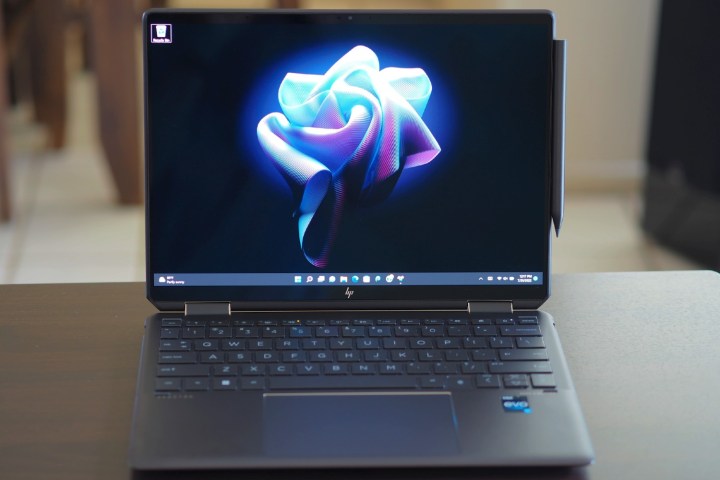
HP Spectre x360 13.5
It keeps getting better
Pros
- Elegant aesthetic
- Excellent productivity performance
- Rock-solid build
- Superior keyboard and touchpad
- Stunning OLED display
- Surprisingly good battery life
Cons
- Creativity performance is lacking
- Slightly expensive
Why you should buy this: It’s both stylish and performs exceptionally.
Who it’s for: Anyone looking for a high-end Windows laptop with few compromises.
Why we picked the HP Spectre x360 13.5:
Competition for thin and light laptops with 13-inch screens has never been tighter. But that’s a great thing for laptop buyers, now with so many excellent choices such as the HP Spectre x360 13.5.
The HP Spectre x360 series of convertible laptops have long been among our favorites. But the Spectre x360 13.5 is the best of the line in a very long time. It brings together a unique yet elegant sense of style with high-end components such as its stunning OLED display and great battery life. It doesn’t have the same weaknesses in ports (it has a headphone jack!) and performance as the XPS 13, either. This is a plenty-fast machine for your work needs, even when using it as a dock to connect to multiple external monitors — though, if it’s discrete graphics you want, you’ll want to opt for the Spectre x360 14.
The only complaint is that it’s a bit more expensive than we’d like, especially compared to new options like the Dell XPS 13 or the M1 MacBook Air. HP prices the Spectre x360 quite high, and in a world where Apple’s MacBooks continue to push the boundary of what’s possible in terms of battery life and performance, it’s been increasingly hard for Windows laptops to compete — especially if they’re not being priced down appropriately.
Fortunately, HP does have a cheaper option in the Envy x360 13, which uses the same form factor but comes in well under $1,000. Like the XPS 13, the Envy x360 does a fantastic job undercutting the M1 MacBook Air in terms of the value it offers.
But if the premium look is what you want, the Spectre 360 x360 13.5 delivers in a big way. It’s the complete package — and sometimes, that’s worth paying for.

HP Spectre x360 13.5
It keeps getting better
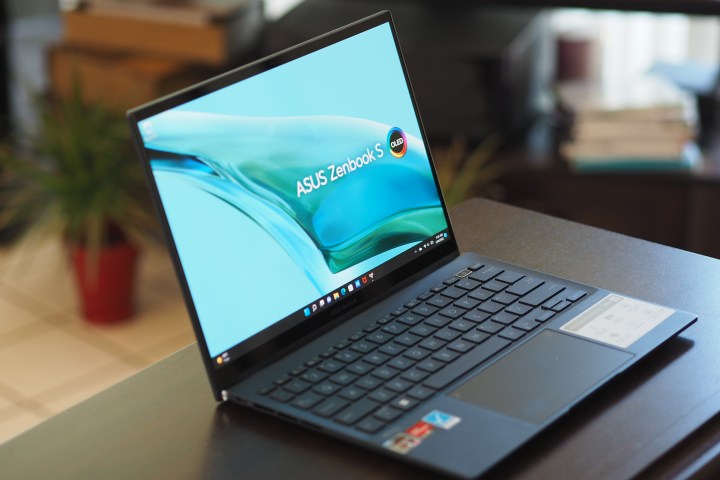
Mark Coppock/Digital Trends
Asus Zenbook S 13 OLED
Tiny laptop, tons of power
Pros
- Fast performance for a thin and light laptop
- Excellent OLED display
- Comfortable keyboard and touchpad
- Very thin and light
- Attractive price
Cons
- A tiny bit of bending and flexing
- Average battery life
Why you should buy this: It’s extremely compact but doesn’t sacrifice performance.
Who it’s for: Students, remote workers, and travelers.
Why we picked the Asus Zenbook S 13 OLED:
In case you haven’t noticed, there’s a bit of an OLED revolution happening in the world of Windows laptops. Asus has been the leader, putting these OLED panels in even midrange or budget laptops. It’s a great sign, and it’s a big leap forward for improving image quality on laptops.
The Zenbook S 13 is one such laptop, but it just happens to be a fantastic little laptop in its own right. Despite being quite thin and light at just 2.2 pounds, the Zenbook S 13 is plenty fast, putting AMD’s new Ryzen 6000 processors to great effect. Don’t get us wrong — this is still a compact laptop, so don’t expect to be editing 4K video on it all day long. But for the daily work of multitasking and videoconferencing, maybe with a splash of photo editing or design work? The Zenbook S 13 has you covered. The integrated graphics are even decent enough to play some simple 3D games, so long as you pull the graphics settings down.
A lot of the basic elements that you expect from a premium laptop are here, too — a comfortable keyboard and trackpad, tiny bezels around the display, and attractive design. It all comes together in a package that is amazingly light, especially when you consider how many things this laptop does well. It might not be as sturdy as some other premium laptops, but it’s certainly robust enough for the usual wear and tear.
Battery life is the one area where the Zenbook S 13 is only average, so you’ll want to consider that when comparing against the plethora of other 13-inch laptops that do better in this regard, such as the Dell XPS 13 or HP Spectre x360 13.5.

Asus Zenbook S 13 OLED
Tiny laptop, tons of power
Frequently Asked Questions
What’s the best laptop brand?
Picking just one laptop brand as the best is a bit of a challenge lately. There are so many great laptops available today, and they come from several manufacturers. Hold our feet to the fire, though, and it’s hard not to look at what Apple is doing with its MacBooks these past couple of years and stand in awe. The transition to Apple Silicon has been pretty effortless, and the flagship resulting laptops have been game-changers.
But apart from Apple, we’ll look at Dell, HP, and Lenovo leading the game in premium designs, refreshing new technology, and a wide-ranging span of laptops to choose from. Lenovo’s ThinkPads are a powerhouse in the business world, while Dell’s XPS brand has become iconic for its innovative approach to design.
Asus isn’t far behind with its Zenbook and ROG Zephyrus lines, though, often producing some of the most cutting-edge and inventive laptops on the market.
What’s a 2-in-1 laptop?
A 2-in-1 laptop is one that isn’t limited to the traditional clamshell configuration. Instead, a 2-in-1 can convert from a clamshell into some form of tablet PC that allows for natural inking and media consumption.
The concept isn’t brand-new — Microsoft sold a “Tablet PC” version of Windows as far back as 2001 that supported pen input, but it never caught on. As electronics have gotten more powerful and fit into smaller chassis, and capacitive touch and active pen technology have improved, the modern 2-in-1 has emerged. Microsoft kicked off the form factor with its Surface line in 2012, and most manufacturers followed with their versions.
Today, you can pick from among a variety of different kinds of 2-in-1s. The most popular types are the tablet with a detachable keyboard, epitomized by the Microsoft Surface Pro 9, and the 360-degree convertible where the display flips around to turn into a (usually larger) slate, such as the HP Spectre x360 13.5.
The main advantage of the tablet 2-in-1 is portability — tablets are extremely thin, light, and easy to carry around — while they also work best for drawing and taking notes on the pen-enabled display. The 360-degree convertible 2-in-1, on the other hand, isn’t quite as handy as a tablet, but it tends to work better in clamshell laptop mode — especially when using it on the lap, where it’s more stable than most detachable tablets.
What processor should I buy?
Laptop processors can be very difficult to distinguish from each other. When we’re talking about Intel chips, what’s most important isn’t deciding between Core i5 and Core i7 — it’s the letter name that proceeds the string of numbers. This letter name, whether H, P, or U, will tell you how much power the chip can draw, which greatly affects performance. So, if you need something for gaming, video editing, or any other demanding task, you’ll want something with a 45-watt H-series processor, such as the Core i7-12700H or Core i9-12900H. Laptops with these chips are very powerful and expensive but often don’t get very good battery life and come in a large chassis.
The U-series chips sit on the opposite side of the spectrum, while the P-series balances in the middle.
While Intel-powered laptops are certainly the most widespread, you’ll also come across options from AMD. AMD’s chips from its most recent Ryzen 6000 are also excellent, often getting better multicore performance, integrated graphics, and battery life than its Intel competitors. The one caveat is that if you’re working primarily in the Adobe Creative Suite, you’ll still get better performance from an Intel laptop due to the optimizations made through the software.
How much RAM do I need?
8GB of RAM is often the starting place for base configurations, and that’s enough if your needs are fairly basic. But if your work involves heavy multitasking with multiple monitors, dozens of Chrome tabs, and video streaming, you’ll likely start getting bottlenecked by that amount of memory.
If that’s you, 16GB is a better option. Very few people should need the bump to 32GB or 64GB, reserved only for the most demanding users.
Should I buy a laptop or a tablet?
As we mentioned above, you can get a tablet that can morph into a laptop just by attaching a keyboard. And so, if you really want the power of Windows in a form factor that’s easier to carry around, then you can select a tablet 2-in-1. With the advent of Windows 11, it’s finally starting to become a better software platform for tablets. If you want the utmost in simplicity and an even smaller device, then a pure tablet like the iPad can be great for web browsing, triaging email, consuming media, and other tasks that don’t require the full power of a “real” PC.
So, where doesn’t a tablet work? If you’re a hardcore gamer, need a laptop that can churn through video and huge photos, or do a lot of multitasking. Tablets are very thin and tend to use slower CPUs and integrated graphics that won’t accelerate creative applications or power modern games. Meanwhile, the software on these devices isn’t as full-featured as a desktop operating system like Windows 10 or macOS.
Editors’ Recommendations


